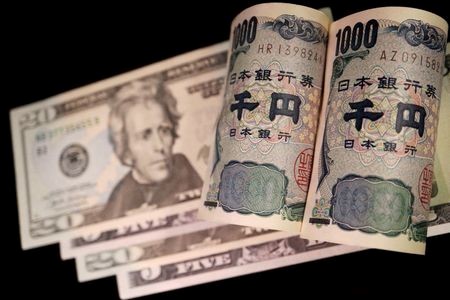




Philippines Trade Update: Trade trajectories trend along
 DOWNLOAD
DOWNLOAD

Policy Rate Updates: Double cut finale
 DOWNLOAD
DOWNLOAD

Monthly Economic Update: One for the road
 DOWNLOAD
DOWNLOAD


Dollar up: yen edges lower after Japanese finance minister comments

NEW YORK, March 26 – The dollar rose on Tuesday as traders waited on a fresh catalyst to give clues on Federal Reserve policy, while the yen slipped after Japan’s finance minister said that he would not rule out any measures to cope with the weakening currency.
Investors are grappling with whether the US central bank will cut interest rates three times this year, as is currently expected if inflation remains elevated and economic growth stays strong.
The dollar index bounced slightly after data on Tuesday showed that orders for long-lasting US manufactured goods increased more than expected in February, while business spending on equipment showed tentative signs of recovery as the economy’s growth prospects in the first quarter remained upbeat.
“The market is intensely searching for signs of cracks in the US economy and they’re hard to find, and durable goods illustrates that again today,” said Adam Button, chief currency analyst at ForexLive in Toronto. “It’s a real wait-and-see market.”
Personal consumption expenditures (PCE) due on Friday is this week’s main economic catalyst. The US core PCE price index is seen rising 0.3% in February, which would keep the annual pace at 2.8%.
Trading volumes on Friday may be light, however, with the US stock and Treasuries markets closed for the Good Friday holiday.
The dollar index gained 0.06% to 104.28, while the euro fell 0.05% to USD 1.0831.
The greenback may come under some pressure this week from month- and quarter-end portfolio rebalancing.
The yen dipped 0.09% to 151.52, reversing earlier gains, as verbal intervention by Japanese officials continued. It has weakened in the past week, despite the Bank of Japan’s (BOJ) ending eight years of negative interest rates.
Traders continue to focus on the still-stark interest rate differentials between Japan and the rest of the world, particularly the United States. A break past 151.94 per dollar, hit in October 2022, would take the Japanese currency to its weakest since 1990.
In 2022, Japanese authorities intervened in currency markets to support the yen.
Japanese Finance Minister Shunichi Suzuki said on Tuesday that “rapid currency moves are undesirable.” That came after Japan’s top currency diplomat Masato Kanda on Monday warned against speculators trying to sell off the yen.
“Dollar/yen is stuck around this 151.50 level. People want to go long/dollar yen because of carry returns, but if it goes to 152 or 153 they may get punished by the currency authorities so they don’t want to try,” said Yusuke Miyairi, currency strategist at Nomura.
The carry trade sees investors borrow in low-yielding currencies to invest in higher-yielding ones.
China’s yuan has also been on traders’ radars since its sudden sharp fall on Friday. It gained slightly in the offshore market to 7.248 per dollar after a firmer-than-expected fix from the People’s Bank of China.
In cryptocurrencies, bitcoin fell 1.28% to USD 70,078.01 It is holding below a record high of USD 73,803.25 reached on March 14.
(Reporting By Karen Brettell; Additional reporting by Rae Wee and Alun John; Editing by Nick Zieminski, William Maclean)
This article originally appeared on reuters.com





 By Reuters
By Reuters